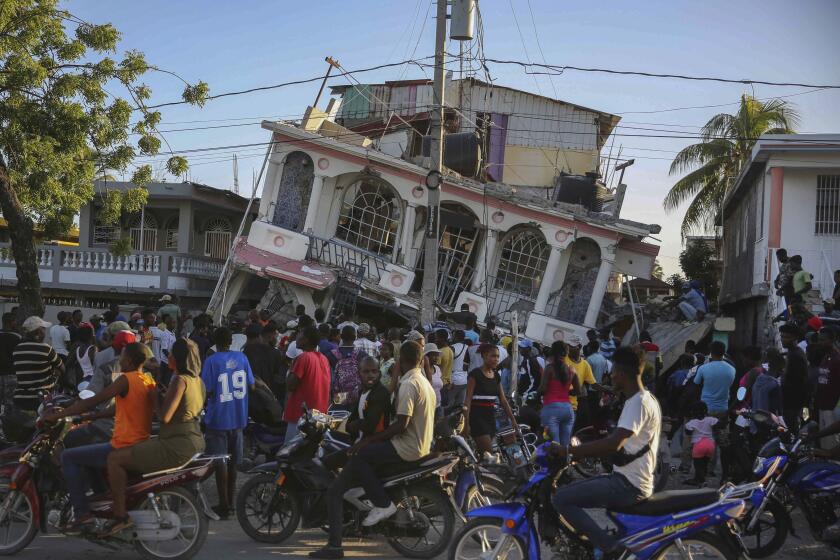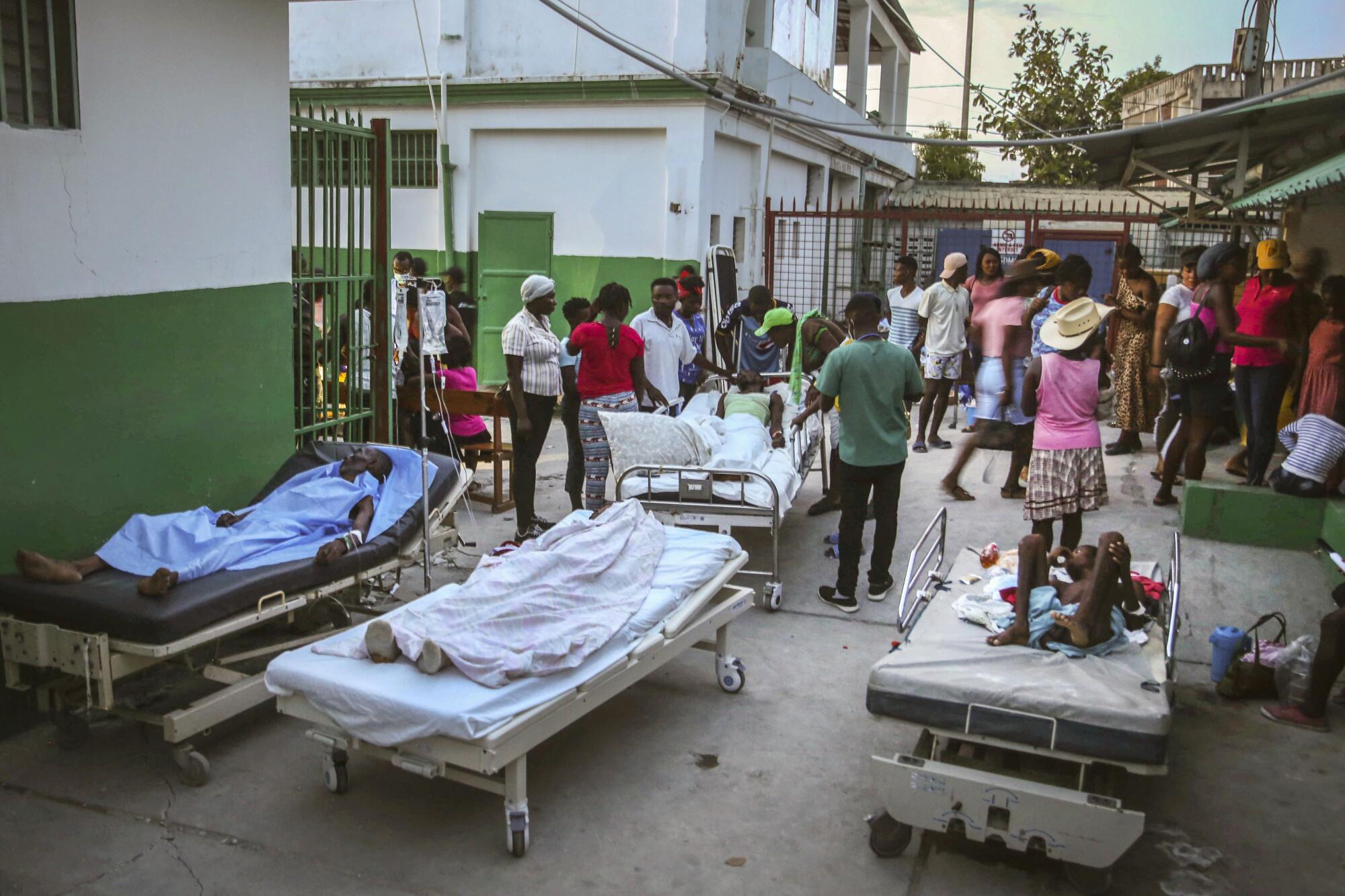
- Share via
LES CAYES, Haiti — A hospital in southwestern Haiti, where a powerful earthquake flattened homes, shops and other buildings over the weekend, was so overwhelmed with patients that many had to lie in patios, corridors, verandas and hallways. Then a looming storm, which could bring heavy rains Monday night, forced officials to relocate the patients as best they could, given the hospital’s poor conditions.
Yet those patients were among the fortunate. Haiti’s Civil Protection Agency on Monday raised the death toll from Saturday’s earthquake to 1,419 and the number of injured to 6,000. Many of the injured have had to wait unsheltered in burning heat, some on an airport tarmac, for help.
“We had planned to put up tents [in hospital patios], but we were told that could not be safe,” said Gede Peterson, director of Les Cayes General Hospital.
It is not the first time the staff has been forced to improvise. The refrigeration in the hospital’s morgue has not worked for three months, but after the earthquake struck, staff had to store as many as 20 bodies in the small space. Relatives quickly came to take most of the dead for private embalming services or immediate burial. By Monday, the morgue held only three bodies.
Saturday’s earthquake, centered about 80 miles west of the capital of Port-au-Prince, nearly razed some towns and triggered landslides that hampered rescue efforts in the poorest country in the Western Hemisphere. Haiti already was struggling with the pandemic, gang violence, worsening poverty and political uncertainty following the July 7 assassination of President Jovenel Moïse when the quake struck.
And the devastation could worsen with the arrival of tropical depression Grace, predicted for Monday night. The Civil Protection Agency said strong winds, heavy rain, rough seas, mudslides and flash flooding were expected. Rainfall could reach 15 inches in some areas.
“We are working now to ensure that the resources we have are going to get to the places that are hardest hit,” said agency head Jerry Chandler, referring to the towns of Les Cayes and Jeremie and the department of Nippes, which are in the country’s southwestern portion.
Injured earthquake victims continued to stream into Les Cayes’ overwhelmed general hospital.
“After two days, they are almost always generally infected,” said Dr. Paurus Michelete, who had treated 250 patients and was one of only three doctors on call when the quake hit.
Meanwhile, rescuers and scrap-metal scavengers dug into the floors of a collapsed hotel Monday in this coastal town, where 15 bodies had been extracted. Jean Moise Fortunè, whose brother, the hotel’s owner and a prominent politician, was killed in the quake, believed there were more people trapped in the rubble.
But based on the size of voids the workers cautiously peered into, perhaps a foot in depth, it appeared unlikely that they would find survivors.
As work, fuel and money ran out, desperate Les Cayes residents searched collapsed houses for scrap metal to sell. Others waited for money wired from abroad, a mainstay of Haiti’s economy even before the quake.
Anthony Emile waited six hours in a line with dozens of others trying to get money his brother had wired from Chile, where he has worked since Haiti’s last quake.
“We have been waiting since morning for it, but there are too many people,” said Emile, a banana farmer whose relatives in the countryside depend on him for money to survive.
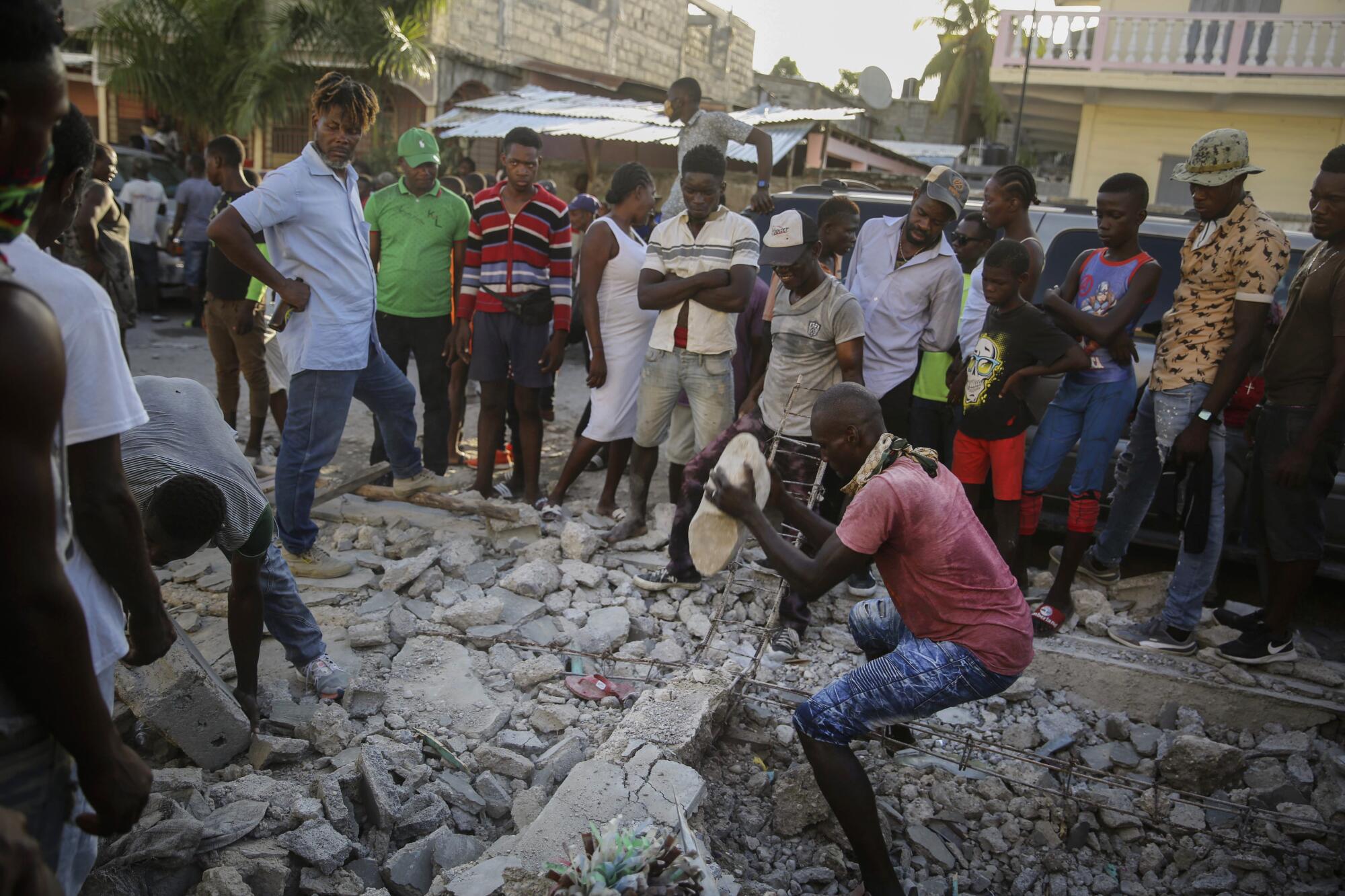
Efforts to treat the injured were difficult at the hospital, where Michelete said pain killers, analgesics and steel pins to mend fractures were running out amid the crush of patients.
Earthquakes have been wreaking havoc in Haiti since at least the 18th century, when the city of Port-au-Prince was destroyed twice in 19 years.
“We are saturated, and people keep coming in,” he said.
Josil Eliophane, 84, crouched on the steps of the hospital, clutching an X-ray showing his shattered arm and pleading for pain medication. Michelete said he would give one of his few remaining shots to Eliophane, who was injured when he ran out of his house as the quake hit, only to have a wall fall on him.
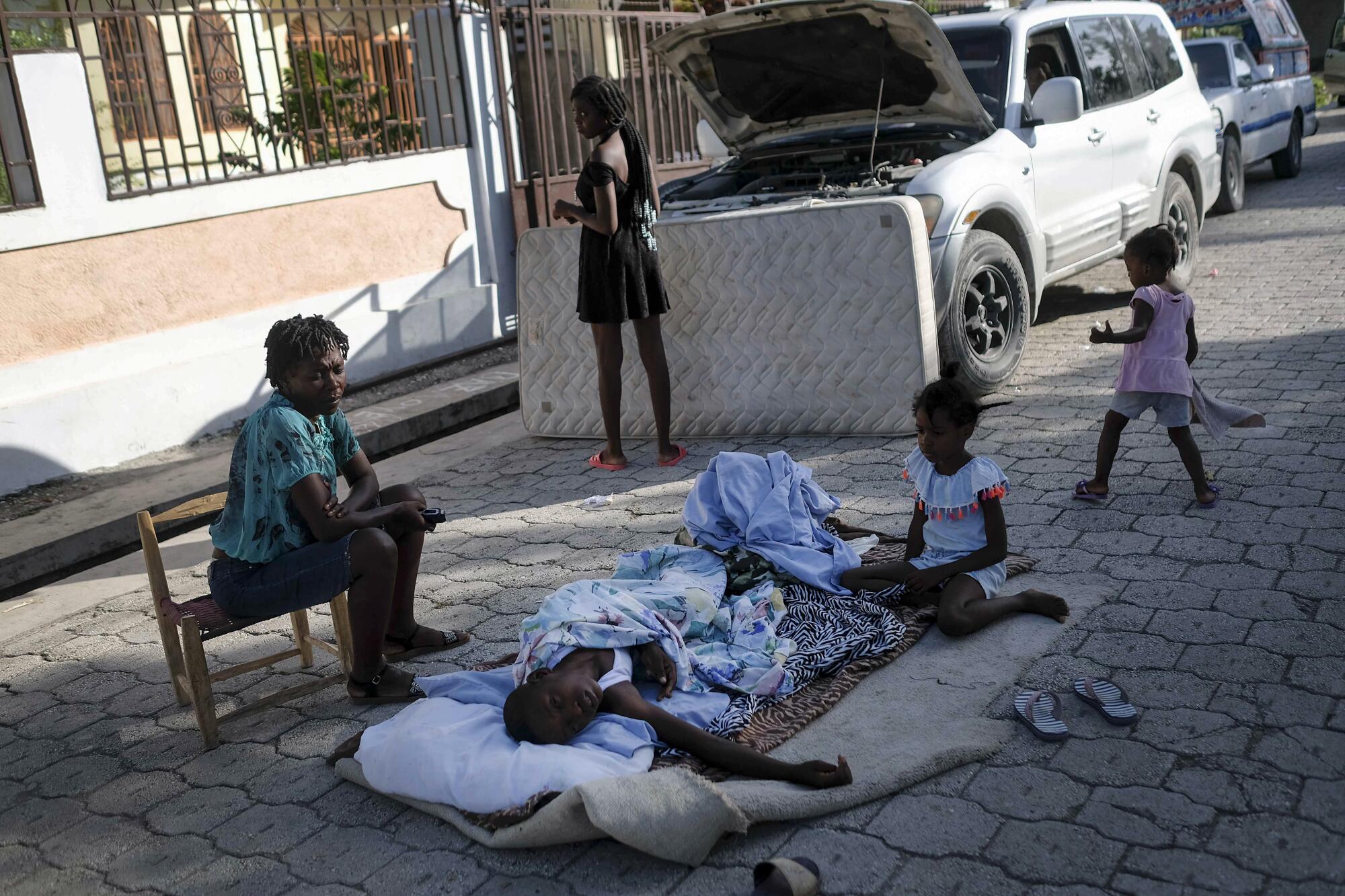
Nearby, on the veranda, patients were on beds and mattresses, hooked up to IV bags of saline fluid. Others lay in the garden just beyond, under bed sheets erected to shield them from the brutal sun. None of the patients or relatives caring for them wore face masks amid a coronavirus surge.
Officials said the magnitude 7.2 earthquake left more than 7,000 homes destroyed and nearly 5,000 damaged, leaving some 30,000 families homeless. Hospitals, schools, offices and churches also were destroyed or badly damaged.
Drop, cover and hold on is the best advice for what to do during an earthquake. Know how you’ll react so you can stay calm and act quickly when the shaking begins.
Underlining the dire conditions, local officials had to negotiate with gangs in the seaside district of Martissant to allow two humanitarian convoys a day to pass through the area, the United Nations Office for the Coordination of Humanitarian Affairs reported. The agency called Haiti’s southern peninsula a “hot spot for gang-related violence,” where humanitarian workers have been repeatedly attacked.
The agency said the area has been “virtually unreachable” over the last two months because of roadblocks and security concerns. Agency spokeswoman Anna Jefferys said the first convoy passed through Sunday with government and U.N. personnel. She added that the U.N.’s World Food Program planned to bring in food supplies via trucks Tuesday.
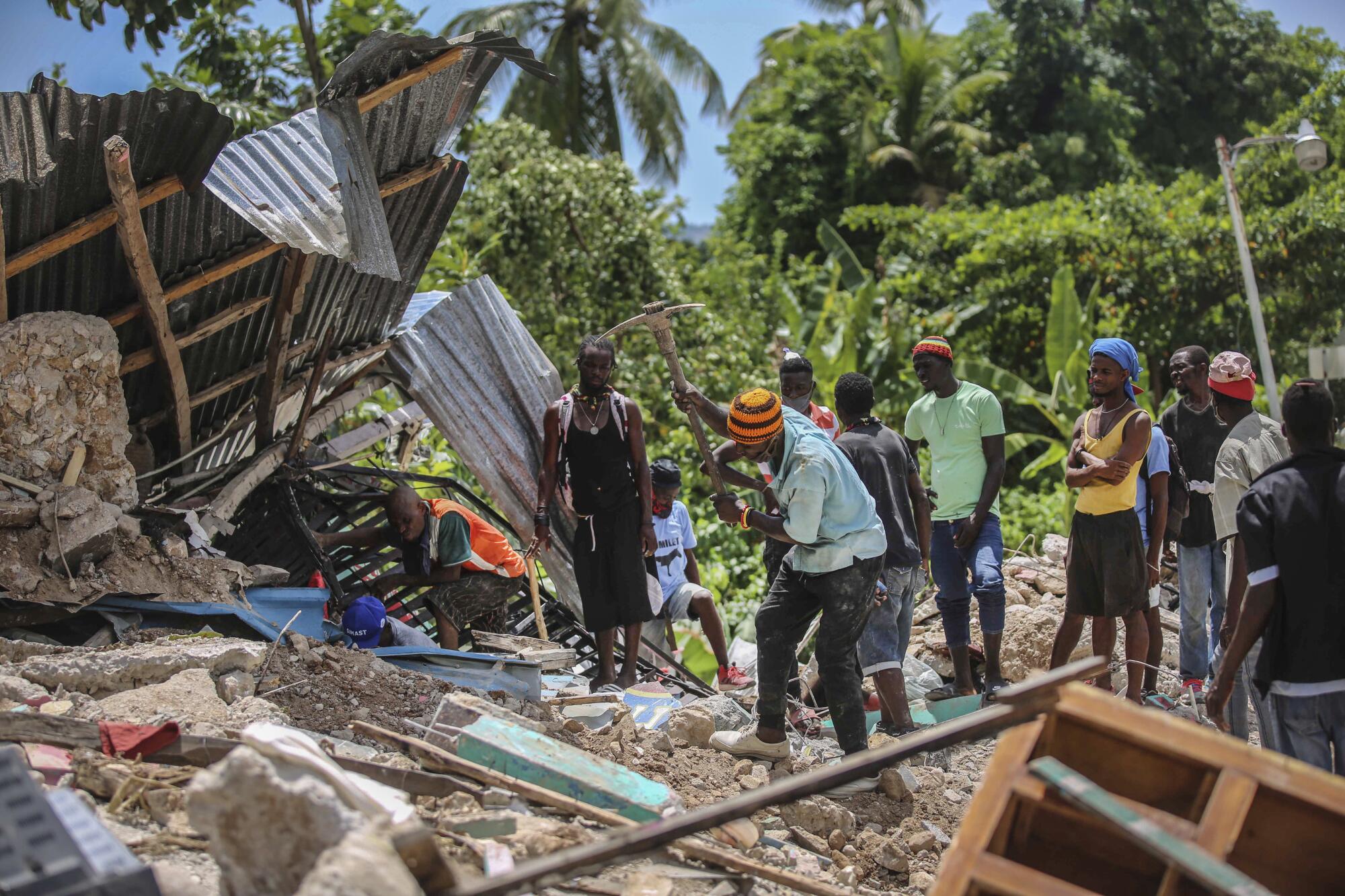
Prime Minister Ariel Henry declared a one-month state of emergency for the country and said first-aid convoys organized by the government had started moving help to areas where towns were destroyed and hospitals were overwhelmed.
UNICEF Executive Director Henrietta Fore said humanitarian needs were acute, with many Haitians in urgent need of healthcare, clean water and shelter. Children who have been separated from parents need protection, she added.
Breaking News
Get breaking news, investigations, analysis and more signature journalism from the Los Angeles Times in your inbox.
You may occasionally receive promotional content from the Los Angeles Times.
Alluding to the 2010 earthquake that ravaged Haiti’s capital, killing tens of thousands, Fore said: “Little more than a decade on, Haiti is reeling once again. And this disaster coincides with political instability, rising gang violence, alarmingly high rates of malnutrition among children and the COVID-19 pandemic — for which Haiti has received just 500,000 vaccine doses, despite requiring far more.”
The country of 11 million people received its first batch of U.S.-donated COVID-19 vaccines only last month, via a U.N. program for low-income countries.
Medical workers from across the region were scrambling to help as hospitals in Les Cayes started running out of space to perform surgeries.
“Basically, they need everything,” said Dr. Inobert Pierre, a pediatrician with the nonprofit Health Equity International, which oversees St. Boniface Hospital, about two hours from Les Cayes.
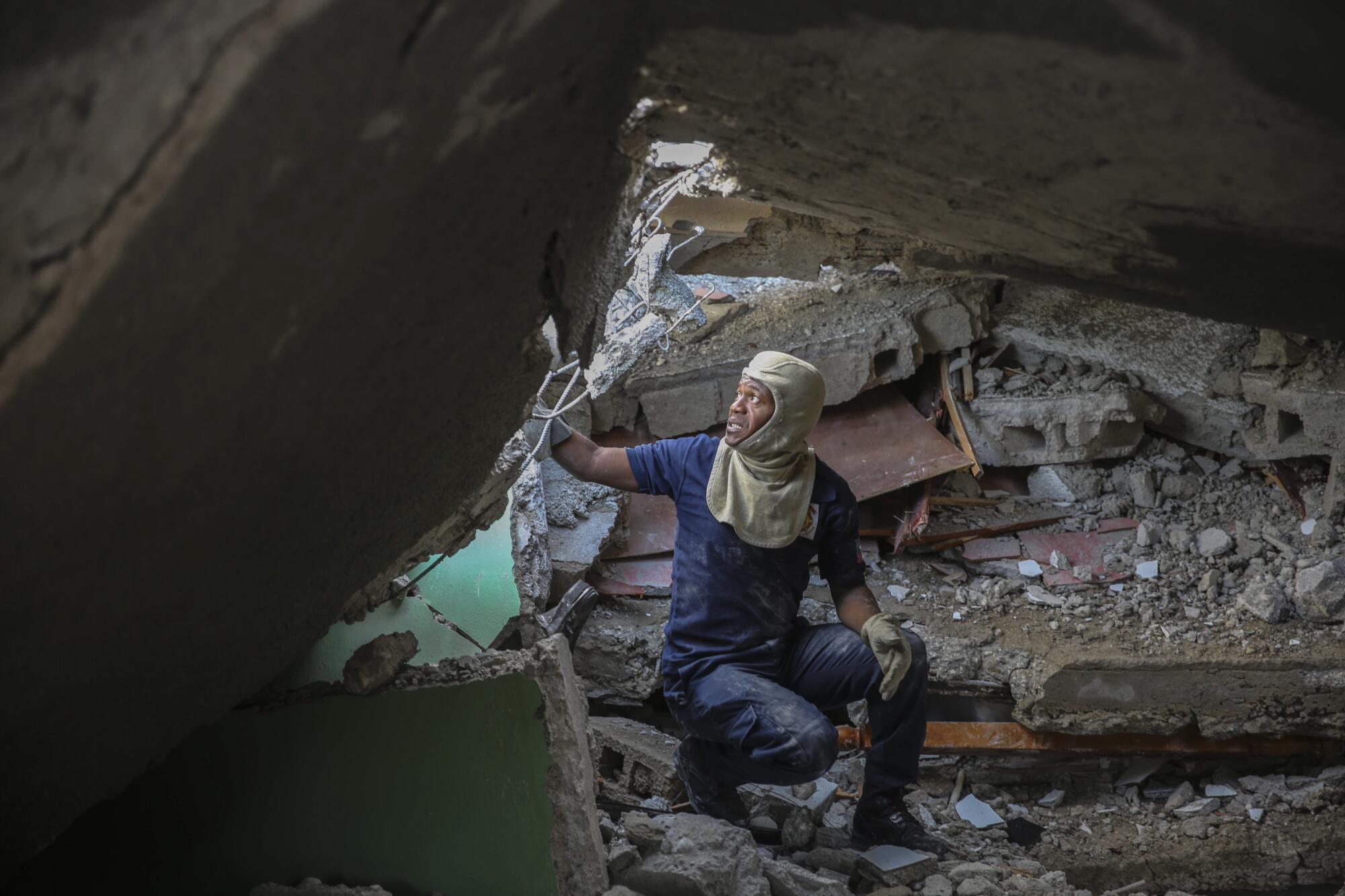
Pierre’s medical team was taking some patients to St. Boniface for surgery, but with just two ambulances, they could transport only four at a time.
Working with USAID, the U.S. Coast Guard said a helicopter was transporting medical personnel from Port-au-Prince to the quake zone and evacuating injured back to the capital. Lt. Commander Jason Nieman, a spokesman, said other aircraft and ships were being sent.
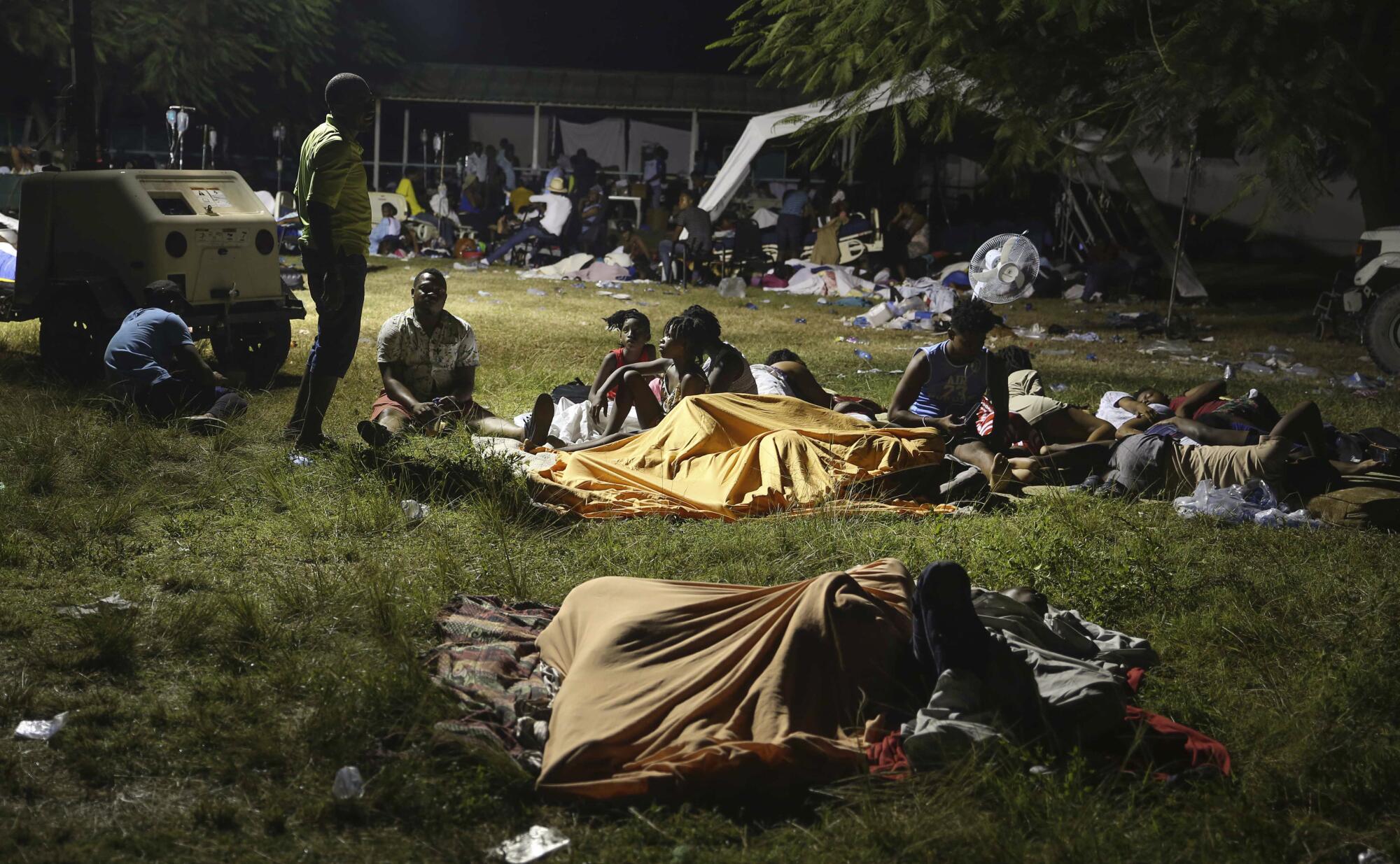
At the Les Cayes hospital, Emma Cadet, 41, a carpenter’s wife, hovered over her 18-year-old son, Charles Owen, as he awaited an operation on his broken arm. He was among the lucky patients to have received pain medication.
Worse off was Nerison Vendredi, 19, lying next to Owen, quiet but alert. No casts or splint would help Vendredi, because she apparently had suffered internal injuries and could not move.
There were some stories of miracle survivals, but they were becoming fewer as the days passed.
Jacquelion Luxama was leading his goats to a watering hole Saturday when a hillside collapsed on him, trapping him amid boulders and a rockslide that stripped skin from his hip.
“I started yelling, and luckily some other famers heard me, and they came and pulled me out, ” said Luxama, lying on a mattress at the Les Cayes hospital.
Associated Press writers Collin Binkley in Boston, Trenton Daniel in New York and Regina Garcia Cano in Mexico City contributed to this report.
More to Read
Sign up for Essential California
The most important California stories and recommendations in your inbox every morning.
You may occasionally receive promotional content from the Los Angeles Times.
